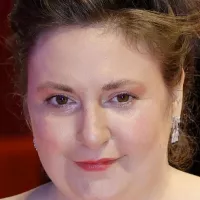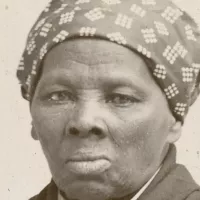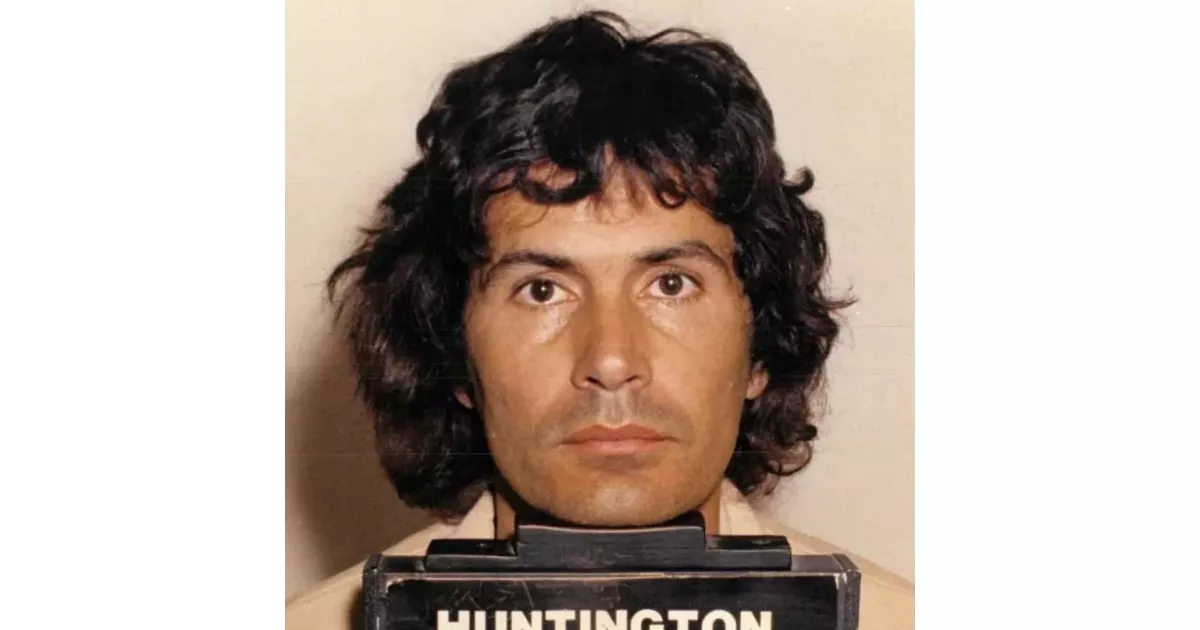Rodney James Alcala was an American serial killer and sex offender convicted and sentenced to death in California for seven murders between 1977 and 1979. He also pleaded guilty and received a sentence for two more murders in New York. Alcala was also indicted for a murder in Wyoming, but charges were dropped. While conclusively linked to eight murders, the true number of his victims is unknown, potentially reaching 130.
August 23, 1943: Rodney Alcala's Birth
On August 23, 1943, Rodney James Alcala, also known as Rodrigo Jacques Alcala, was born.
1954: Moved to Los Angeles
In 1954, Rodney Alcala's mother moved him and his two sisters to suburban Los Angeles.
1961: Joined the United States Army
In 1961, at the age of 17, Rodney Alcala joined the United States Army to become a paratrooper and served as a clerk.
1964: Diagnosed with Antisocial Personality Disorder
In 1964, Rodney Alcala was diagnosed with antisocial personality disorder and discharged from the army on medical grounds after a nervous breakdown.
July 1968: Morgan Rowan attacked by Alcala
In July 1968, Morgan Rowan was attacked by Rodney Alcala. She was approached by him at a teen nightclub on the Sunset Strip and he drove her to his apartment where he beat and raped her. She was later rescued by friends.
September 25, 1968: Assault on Tali Shapiro
On September 25, 1968, Rodney Alcala lured eight-year-old Tali Shapiro into his apartment, where he raped and beat her. Shapiro was found alive but in critical condition.
June 12, 1971: Murder of Cornelia Crilley
On June 12, 1971, Cornelia Crilley was found raped and murdered in her Manhattan apartment; Rodney Alcala strangled her with her own nylon stockings.
1971: Murder of Crilley
In 1971, Crilley was murdered. Rodney Alcala was later indicted and pleaded guilty for the murder.
1971: Job at Arts Camp and FBI Most Wanted Listing
In 1971, Rodney Alcala obtained a job at a New Hampshire arts camp as a counselor and was added to the FBI's list of Ten Most Wanted Fugitives and later arrested.
1971: FBI Received Tip About Alcala's 1971 Arrest
In 1971, the FBI received a tip about Rodney Alcala's 1971 arrest in New Hampshire, related to the Shapiro case in California. In 1977, Alcala admitted to knowing Ellen Jane Hover, but investigators could not arrest him as her body had not been found.
1974: Paroled After Child Molestation Conviction
In 1974, Rodney Alcala was paroled after serving thirty-four months for child molestation.
June 1977: Thornton last seen hitchhiking
In June 1977, Christine Ruth Thornton was last seen hitchhiking in Biloxi, Mississippi, after splitting up with her lover.
July 15, 1977: Ellen Jane Hover Last Seen
On July 15, 1977, Ellen Jane Hover was last seen at her New York apartment, with a datebook entry indicating a meeting with "John Berger", now believed to be Rodney Alcala.
October 9, 1977: Pamela Jean Lambson Murder
On October 9, 1977, Pamela Jean "Pam" Lambson disappeared after making a trip to Fisherman's Wharf. She was found dead near a hiking trail in Marin County.
1977: Murder of Hover
In 1977, Hover was murdered. Rodney Alcala was later indicted and pleaded guilty for the murder.
1977: Murders of Jill Barcomb and Georgia Wixted
In 1977, Jill Barcomb and Georgia Wixted were murdered and later linked to Rodney Alcala through DNA evidence.
1977: Released as Registered Sex Offender
In 1977, Rodney Alcala was released as a registered sex offender after being re-arrested and convicted for assaulting a 13-year-old girl.
1977: Brief Employment at Los Angeles Times and Interview by Hillside Strangler Task Force
In 1977, Rodney Alcala worked briefly at the Los Angeles Times as a typesetter and was interviewed by the Hillside Strangler task force; he was also arrested for marijuana possession and took photos of young men and women.
1977: 1977 Murder of a woman in Alcala's Photos
In 1977, a woman, who was in Alcala's photo, was murdered. Alcala was charged with the murder in 2016.
1977: FBI Received Tip About Alcala's 1971 Arrest
In 1977, the FBI received a tip about Rodney Alcala's 1971 arrest in New Hampshire, related to the Shapiro case in California. Alcala admitted to knowing Ellen Jane Hover, but investigators could not arrest him as her body had not been found.
1978: Alcala Shows Dating Game Appearance to Jury
During the third trial, Rodney Alcala showed the jury a portion of his 1978 appearance on The Dating Game in an attempt to prove that the earrings found in his Seattle locker were his, not Samsoe's.
1978: Murder of Charlotte Lamb
In 1978, Charlotte Lamb was murdered and later linked to Rodney Alcala through DNA evidence.
1978: Discovery of Ellen Jane Hover's Remains
In 1978, Ellen Jane Hover's remains were discovered buried under heavy rocks on a hillside overlooking the Hudson River.
1978: Contestant on The Dating Game
In 1978, Rodney Alcala appeared as a contestant on The Dating Game, winning a date with Cheryl Bradshaw, who refused to go out with him.
July 1979: Arrested for Samsoe's Murder
In July 1979, Rodney Alcala was arrested for the murder of Samsoe and held without bail.
1979: Jewelry found in storage locker
In 1979, Investigators found jewelry belonging to two of Rodney Alcala's California victims in a Seattle-area storage locker rented by him.
1979: Murder of Jill Parenteau
In 1979, Jill Parenteau was murdered and later linked to Rodney Alcala through DNA evidence.
1979: Murders Committed
In 1979, Rodney Alcala continued committing a series of seven murders in California.
1979: Liane Leedom Photographed
In 1979, Rodney Alcala photographed Liane Leedom, who reported that he claimed to be a professional photographer and shared a portfolio containing photos of naked teenage boys.
May 1980: Guilty Verdict in Samsoe's Murder Trial
In May 1980, Rodney Alcala was found guilty of Samsoe's murder and sentenced to death in June.
1982: Thornton's body found
In 1982, Christine Ruth Thornton's body was found near Granger, Wyoming.
1984: Overturned Verdict
In 1984, Rodney Alcala's guilty verdict was overturned by the California Supreme Court due to improperly informed jurors.
May 1986: Second Conviction and Death Sentence
In May 1986, Rodney Alcala was again convicted and sentenced to death in August after a second trial.
1992: California Supreme Court Upheld Verdict
In 1992, the California Supreme Court upheld Rodney Alcala's verdict, but he filed a federal habeas corpus petition.
2001: Second Conviction Overturned
In 2001, a United States district court judge granted Rodney Alcala's petition, overturning his second conviction.
2003: DNA Match to Additional Murders
In 2003, Orange County investigators discovered that Rodney Alcala's DNA matched semen left at the rape-murder scenes of two women in Los Angeles, leading to an indictment for additional murders.
2003: Motion to Join Samsoe Charges
In 2003, prosecutors entered a motion to join the Samsoe charges with those of the four newly discovered victims, which Rodney Alcala's attorneys contested.
2003: Decision Upheld by Ninth Circuit Court of Appeals
In 2003, the Ninth Circuit Court of Appeals panel upheld the decision to overturn Rodney Alcala's second conviction.
2004: Additional Cold Case DNA Match
In 2004, an additional cold case DNA match linked Rodney Alcala to more murders.
2006: California Supreme Court Ruled in Prosecution's Favor
In 2006, the California Supreme Court ruled in the prosecution's favor to join the Samsoe charges with the newly discovered victims.
2007: Death penalty no longer an option in New York
In 2007, the death penalty has not been an option in New York State.
February 2010: Trial on Five Joined Charges
In February 2010, Rodney Alcala stood trial on the five joined charges.
March 2010: Third Death Sentence
In March 2010, Rodney Alcala was sentenced to death for a third time.
March 2010: Release of Alcala's photographs
In March 2010, the Huntington Beach, California and New York City Police Departments released 120 of Rodney Alcala's photographs to seek public help in identifying potential victims.
2010: Authorities no longer pursued Alcala
After his 2010 conviction, New York authorities announced that they would no longer pursue Rodney Alcala because of his status as a convict awaiting execution.
2010: Thornton is the first alleged murder victim linked to Alcala photos
In 2010, Christine Ruth Thornton is the first alleged murder victim linked to the Alcala photos made public.
2010: Alcala named person of interest in Washington
In 2010, Seattle police named Rodney Alcala as a "person of interest" in several unsolved murders in Washington state.
2010: 48 Hours Mystery episode about Alcala
In 2010, the true crime series 48 Hours Mystery broadcast on CBS did an episode about Rodney Alcala called Rodney Alcala: The Killing Game.
January 2011: Alcala indicted for 1971 and 1977 murders
In January 2011, a Manhattan grand jury indicted Rodney Alcala for the murders of Crilley and Hover, which occurred in 1971 and 1977.
March 2011: Alcala Linked to Lambson Murder
In March 2011, investigators in Marin County, California, announced that they were "confident" that Rodney Alcala was responsible for the October 9, 1977, murder of Pamela Jean "Pam" Lambson.
2011: Crilley's Murder Solved
In 2011, the murder of Cornelia Crilley was solved.
June 2012: Alcala Extradited to New York
In June 2012, Rodney Alcala was extradited to New York where he initially entered not guilty pleas for the murders of Crilley and Hover.
December 2012: Alcala changes pleas to guilty
In December 2012, Rodney Alcala changed his pleas to guilty in the murders of Crilley and Hover, citing a desire to return to California to pursue appeals of his death penalty conviction.
January 7, 2013: Alcala sentenced to additional time
On January 7, 2013, a Manhattan judge sentenced Rodney Alcala to an additional 25 years to life in prison.
2013: Thornton recognized in Alcala photo
In 2013, an image made public by Huntington Beach PD and NYPD of a woman riding a motorcycle was recognized as Christine Ruth Thornton by her sister.
2013: Photos connected to a murder case
In 2013, one of the photos was unequivocally connected to a missing person case or unsolved murder.
2015: Thornton's body identified
In 2015, the body found in 1982 was identified as Christine Ruth Thornton when DNA supplied by her relatives matched tissue samples from her remains.
September 2016: Alcala Charged with Thornton Murder
In September 2016, Rodney Alcala was charged with the murder of 28-year-old Christine Ruth Thornton.
2016: Charged with 1977 Murder
In 2016, Rodney Alcala was charged with the 1977 murder of a woman identified in one of his photos.
2017: The Dating Game Killer film released
In 2017, a biographical film about Rodney Alcala's life titled The Dating Game Killer was directed by Peter Medak and broadcast on the American television network Investigation Discovery.
2017: Murder Made Me Famous episode about Alcala
In 2017, the true crime series Murder Made Me Famous broadcast on Reelz did an episode about Rodney Alcala called The Dating Game Killer.
July 24, 2021: Rodney Alcala's Death
On July 24, 2021, Rodney James Alcala died.
2021: Rowan contacted investigator after Alcala's death
Following Rodney Alcala's death in 2021, Morgan Rowan contacted Steve Hodel and described being attacked by Alcala in July 1968.
2021: 20/20 episode about Alcala
In 2021, the series 20/20 broadcast on ABC did an episode about Rodney Alcala called The Dating Game Killer.
2022: Dating Death released
In 2022, a three-part television documentary series about Rodney Alcala was released called Dating Death.
2024: Woman of the Hour released
In 2024, Netflix released a biographical film, titled Woman of the Hour, directed by and starring Anna Kendrick, depicting several of Alcala's murders as well as his appearance on The Dating Game.
Mentioned in this timeline
California is a U S state on the Pacific Coast...

Los Angeles is the most populous city in California and...

Seattle is the most populous city in Washington state and...
Texas the second-largest US state by area and population is...
Mexico officially the United Mexican States is a North American...

Anna Kendrick is an American actress celebrated for her roles...
Trending

4 months ago Jon Bon Jovi and Dorothea to Speak at Power of Pink Fundraiser's 30th Year

14 days ago Andy Reid Addresses Media, Mahomes Allegedly Takes a Shot, Chiefs Emphasize Run

4 days ago Hugh Jackman & Kate Hudson surprise NYC bar with Neil Diamond tribute.

7 months ago Lena Dunham debuts dark hair transformation and unveils 'Too Much' Netflix series release date.

5 days ago Aaron Wiggins seizes opportunity with OKC Thunder injuries, recovers from adductor issue.
2 days ago Jalen Williams' Impact: Thunder, Warriors Matchups, Dort's Future, Injury Return
Popular
Matt and Ross Duffer known as the Duffer Brothers are...
Aftyn Alyssa Behn is an American politician currently serving as...

Candace Owens is an American conservative political commentator and author...

XXXTentacion born Jahseh Dwayne Ricardo Onfroy was a controversial yet...

Ilhan Omar is an American politician currently serving as the...

Harriet Tubman was a pivotal American abolitionist and social activist...
